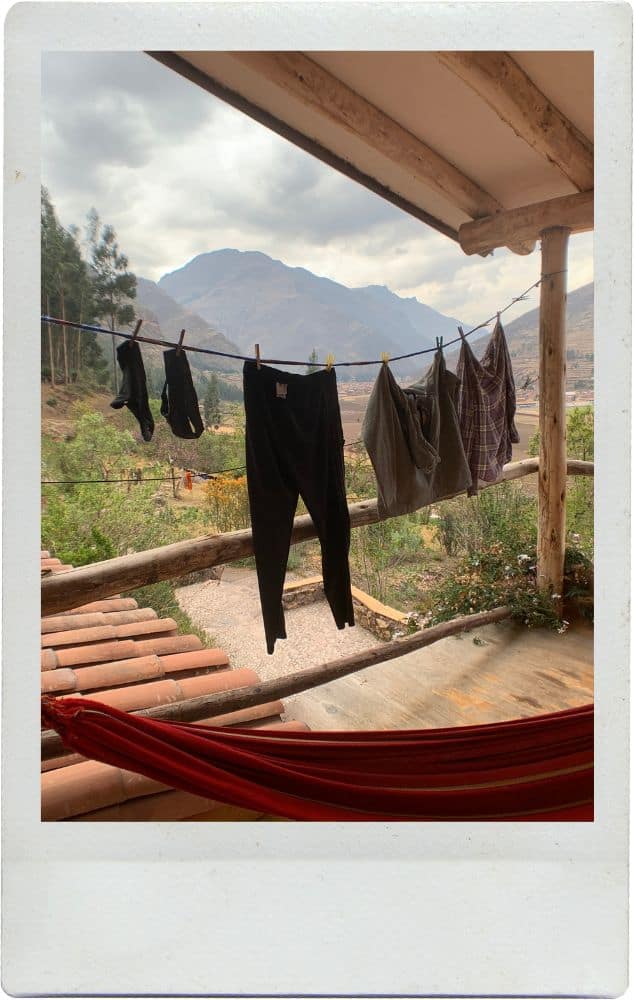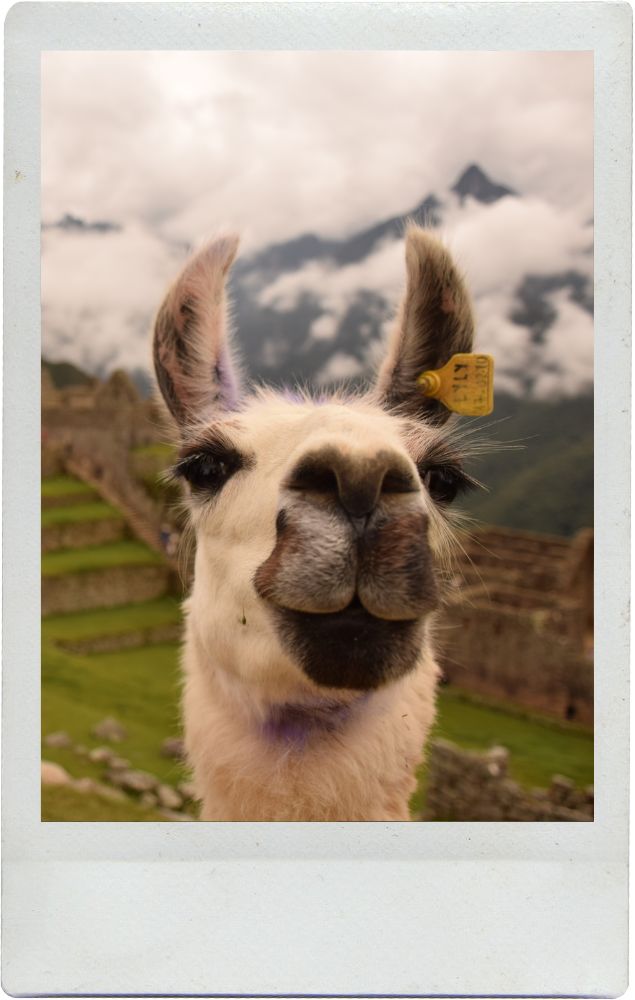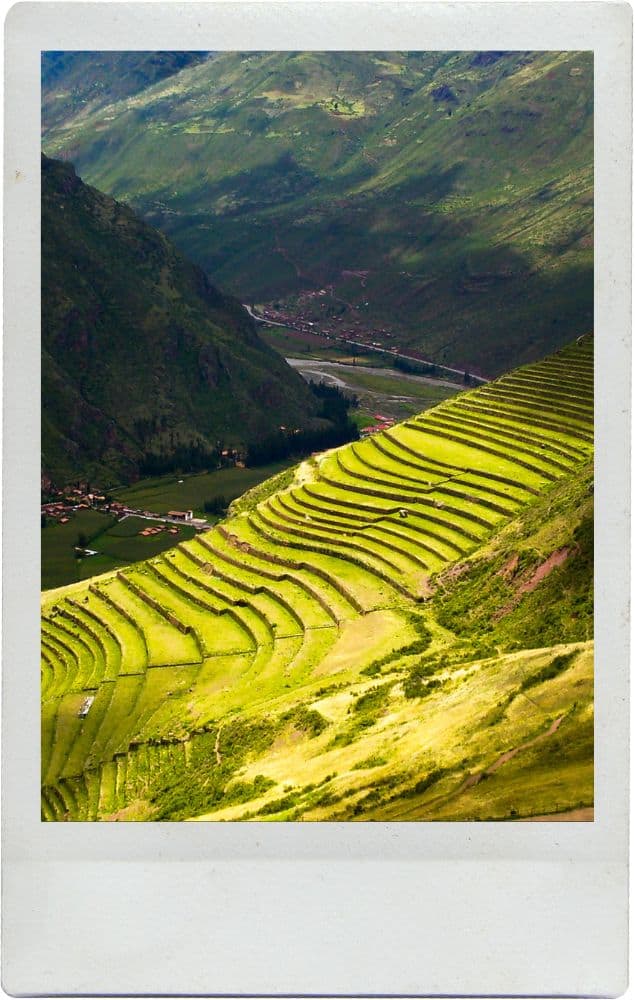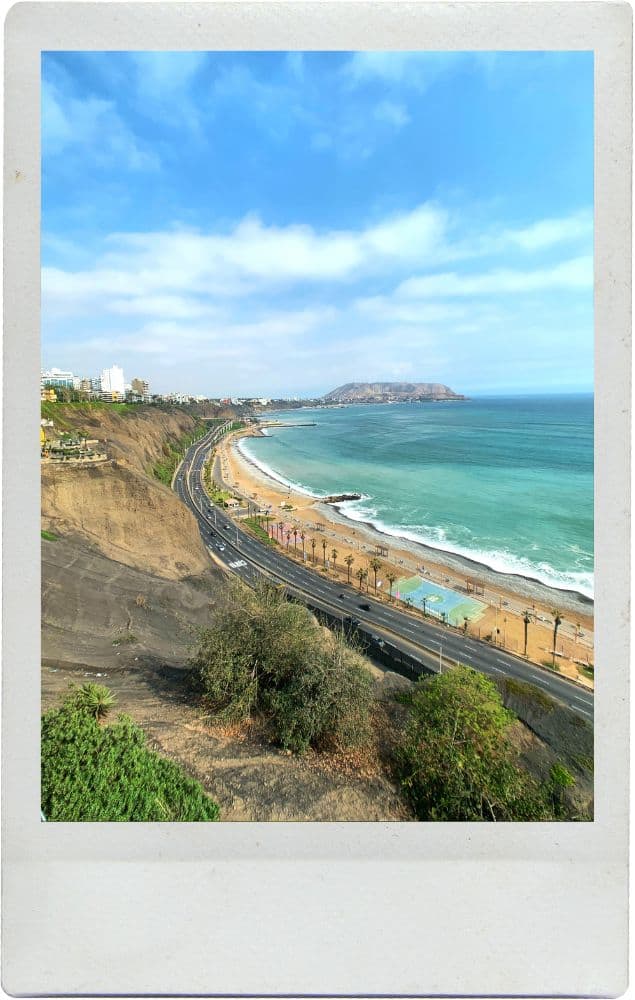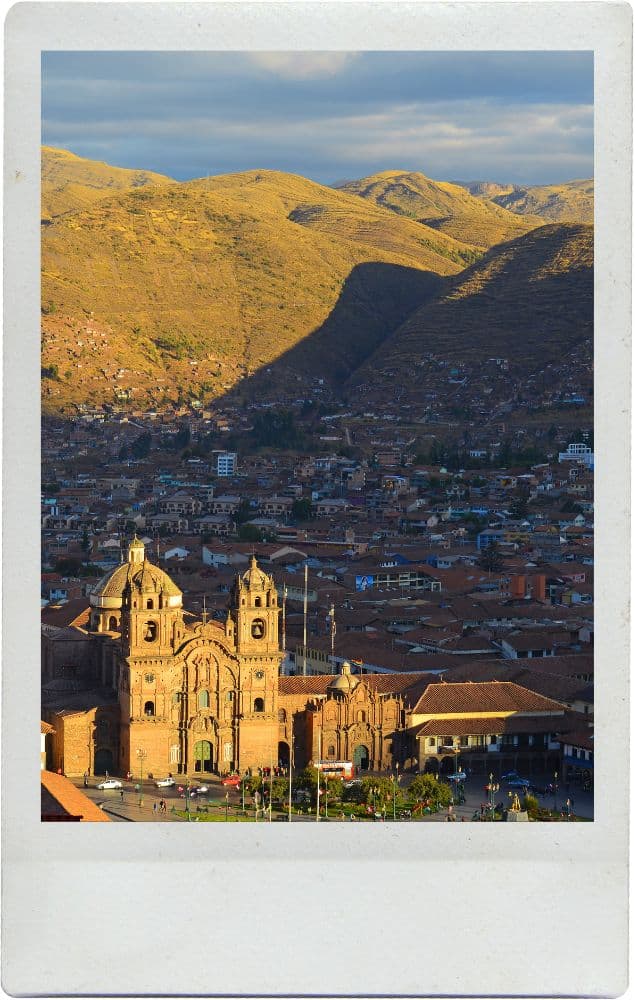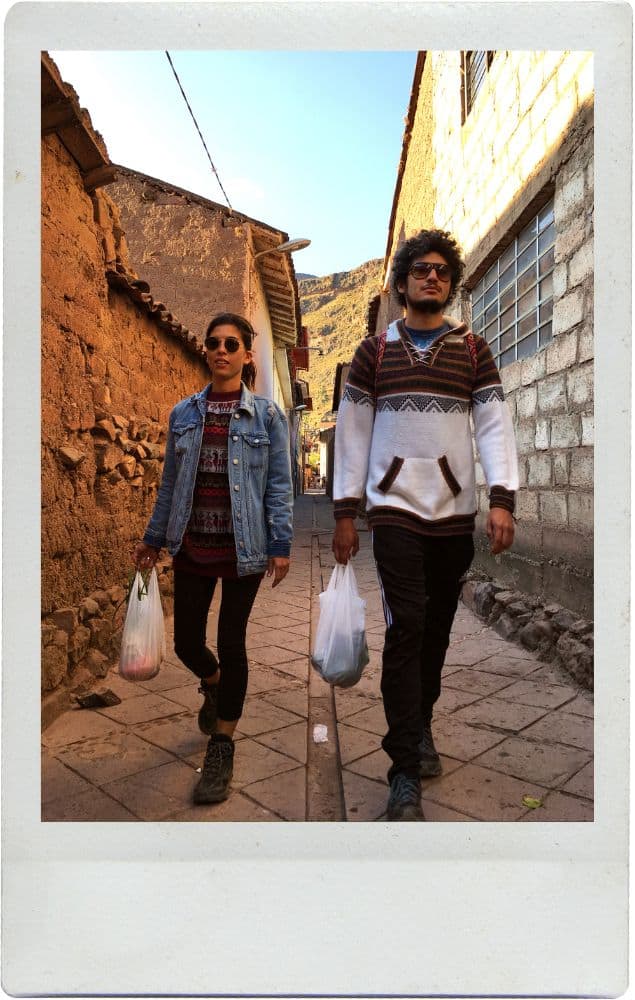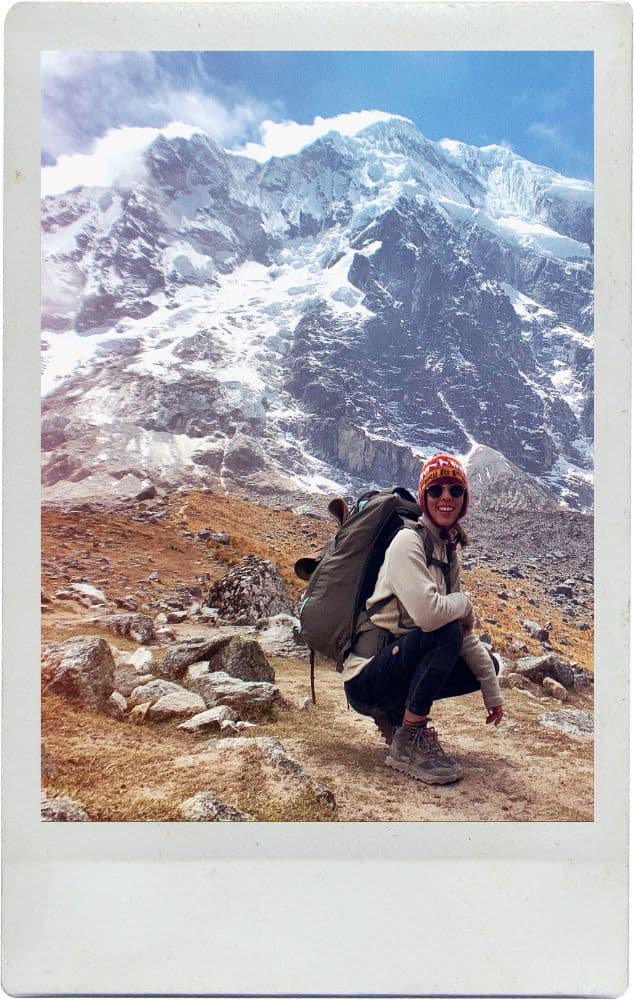Ayahuasca & Mescaline: 5 Nights in the Heart of the Peru
In 2019, I traveled to Urubamba, Peru, seeking something I couldn’t quite name. What I found was Wilkamayu Spirit, a humble and deeply sacred retreat tucked in the Andes Mountains of the Sacred Valley. I had heard whispers of healing, of plant medicine, of ayahuasca calling souls from all over the world—and something in me said yes to Wilkamayu in Peru.
Wilkamayu Spirit offered me a 5-night plant medicine retreat that includes all meals, accommodation, two ayahuasca ceremonies, and one mescaline ceremony—all for just $550 (per person). Yes, you read that right. And as of now, in 2025, the prices have barely changed. In a world where spiritual retreats are becoming luxury experiences, Wilkamayu remains rooted in accessibility, integrity, and authenticity.
If you are interested in other posts about Peru check them out here:
5-Day Salkantay Trek to Machu Picchu: What to Expect & Why It’s Worth It
7 Things to do in Pisac, Peru: The Gateway to the Sacred Valley
This isn’t a place of glamour or curated aesthetics. It’s raw, real, and intimate. There were only three of us in my group. The food was incredibly simple—bland by design to honor the dieta—and the energy was quiet, sacred, and deeply held by the land itself.
No mirrors, phones, performance. Just presence.
And presence is where everything begins.
Unfortunately, I didn’t take much photos.
In this blog post, I’ll take you through my experience—what I saw, what I felt, and what I let go of. Whether you’re curious about ayahuasca in Peru, seeking your own healing path, or simply drawn to the call of the Andes, I hope these words meet you where you are.
From the moment I arrived, even in the dark of night, I felt a shift. Not because of grand gestures or aesthetic perfection, but because the space was honest. Held with care. Real.

So why Ayahuasca?
When I was 19, I had a near-death experience. I died—murdered in cold blood—and yet what I experienced beyond this world was the most beautiful thing I’ve ever known. It was the greatest spiritual release. The deepest peace. The purest joy. Since that moment, I had been chasing that feeling—through mushrooms, LSD, molly, alcohol, weed, you name it. But nothing ever touched that space. Nothing brought me back to that lightness of being. Not even close.
I started hearing people say that their experience with ayahuasca felt like dying. Like a cross over.
So, I decided to save up and take a big trip through South America. And at the top of that list—before waterfalls and ruins and beaches—was ayahuasca.
And boy… I did not expect what came next.
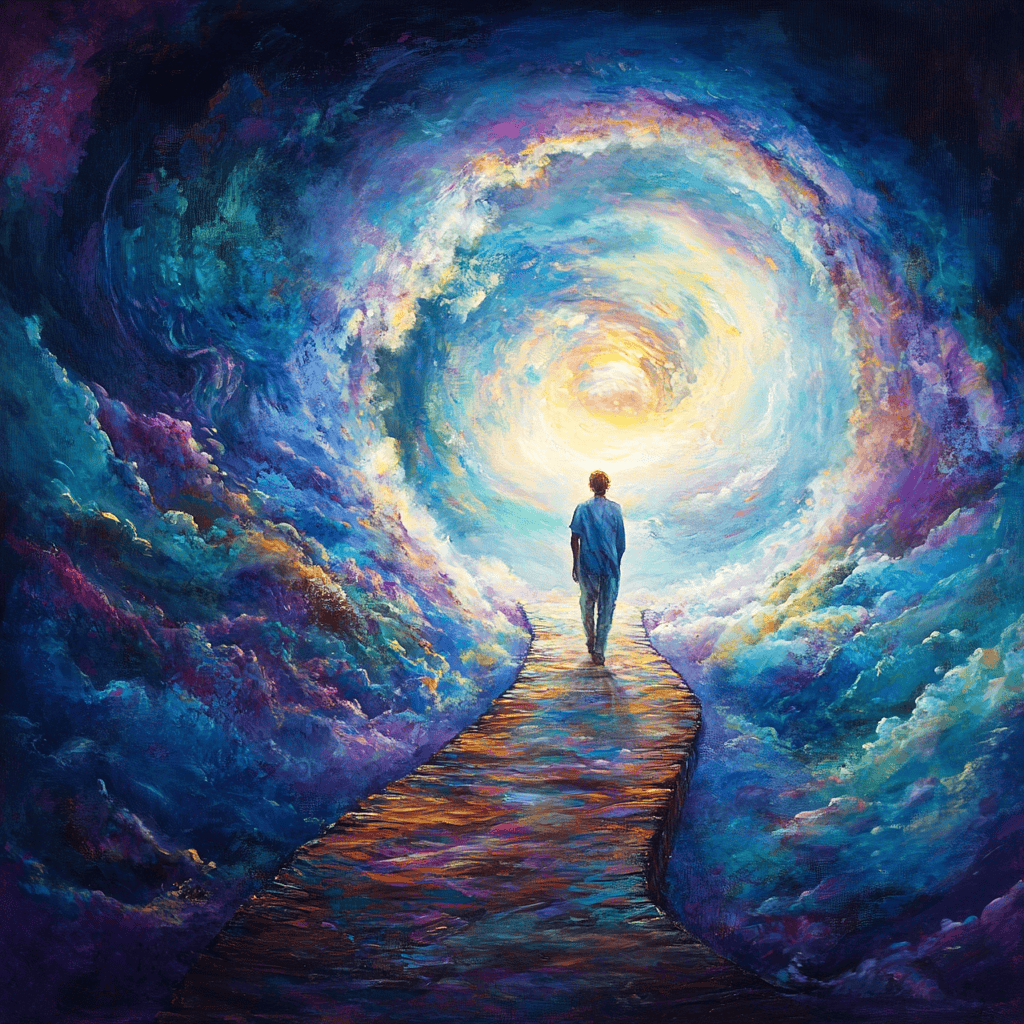
The Journey to Wilkamayu, Altitude & Diet
I knew from the beginning that if I was going to do this, I wanted to do it right—with preparation, respect, and care. One of the biggest concerns I had was the altitude. Urubamba sits at about 9,400 feet in the Sacred Valley, and the last thing I wanted was to experience altitude sickness while drinking ayahuasca. That kind of physical stress can really cloud a ceremony, especially when your body is already going through so much.
To give ourselves a better chance of adjusting, we stayed in Mexico City for two days before heading into Peru. The elevation there (about 7,300 feet) helped ease the transition, even if only a little. Looking back, we could’ve just landed in the Andes and given ourselves a few days to acclimate before the ceremony.
From Mexico City, we flew to Lima, then caught another flight to Cusco, where the real altitude kicks in at over 11,000 feet. After landing, we were picked up by a driver who took us on a winding, quiet journey—about two hours through the mountains—until we reached Urubamba.
It was dark when we arrived, around 10pm. We stepped out of the car into crisp mountain air and were greeted with open arms by Jhon and Janneke, the heart and soul behind Wilkamayu Spirit. Even though it was late, they welcomed us like old friends. There was a warmth to their presence, the kind that made you exhale a little deeper. We had made it.

They had prepared a simple meal for us upon arrival. I sat down, grateful, thinking I had done a pretty good job with the ayahuasca dieta before getting there—cutting out meat, sugar, salt, caffeine, alcohol. I thought I was ready.
But then I took the first bite.
And realized… oh no. I had not been doing the dieta the way they were. The food they served us was the blandest thing I had ever tasted. No salt, no spice, no oil—just very plain grass soup, bland bread, and hot tea. My taste buds didn’t know what hit them.
I thought to myself, “uh oh.”
It was humbling, honestly. Because in that moment, I realized just how much we can be stimulated. Taste is powerful. Food is emotion. And when you strip it down to its bare bones, you’re left with a kind of rawness that matches the ceremony itself. It’s not about indulgence anymore. It’s about presence. Simplicity. Quieting the senses so the medicine can speak louder.
That first meal was an unexpected ceremony in itself.
Day 1 – Into the Sacred (Ayahusca Cermony #1)
I woke up to the breathtaking stillness of the Andes Mountains. After arriving in the dark the night before, I could finally see everything—the towering peaks, the soft golden light of morning, and a river flowing nearby like a quiet heartbeat of the valley.
We were told to rest. To slow down. To begin letting go.
One of the first things I noticed was what was missing—no electricity, no mirrors. That alone began to shift something inside me. Without an outlet, I couldn’t charge my phone, a screen to distract me or a reflection to evaluate, I was forced to feel more present… more me. I laid a blanket out on the grass and soaked in the warm sunlight, fully aware that the Sacred Valley nights would bring a deep, biting cold. The silence and space were medicine in themselves.
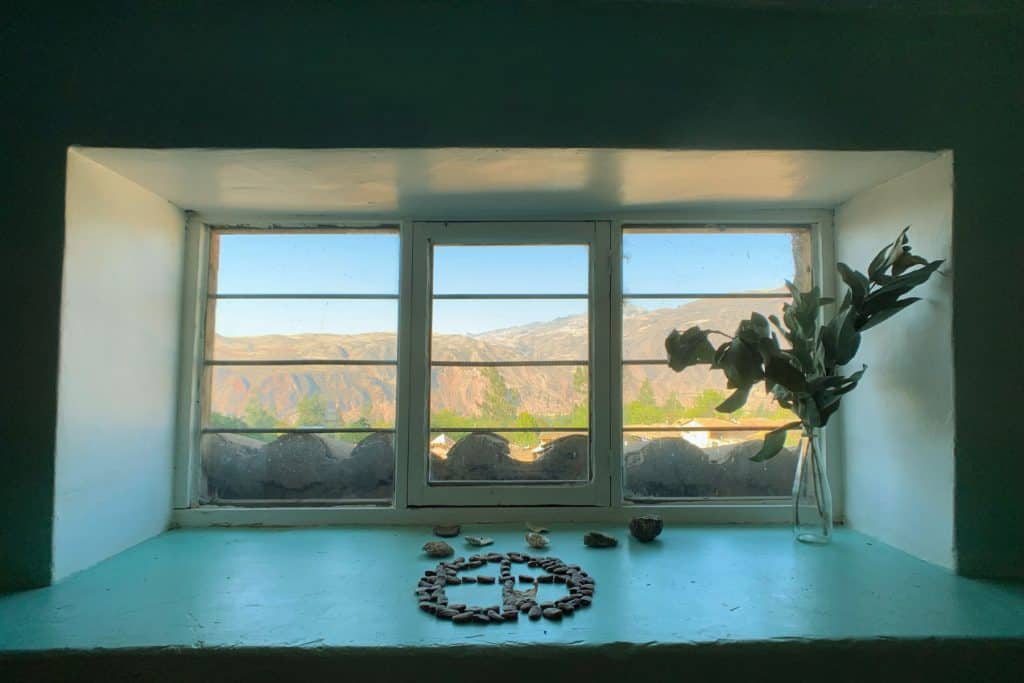
Later that day, each of us had a quiet one-on-one session with Janneke, who gently asked about our pasts—traumas, intentions, anything that might need to be held with extra care. There was no judgment, only presence. Just being listened to felt healing.
We also got to meet our Maestro, Kamaski. He spoke in Quechua, a language rooted deep in the earth and spirit of the Andes, and Jhon translated for us. He didn’t say much, but you could feel the wisdom in his silence. We were given a simple overview of what to expect—though, of course, no words could prepare you.
Once night fell, we entered a small, intimate ceremonial room. Just three of us, and the energy was thick with anticipation. Each of us had a comfortable spot—a blanket, a bucket, and space to surrender.
The ceremony began.
There was tobacco smoke, the air filled with its cleansing bitterness. Then the shaman began preparing the brew, and as I watched the ayahuasca bubble into the cup, it reminded me of some animated witch’s brew—dark, strange, potent.
I drank it quickly. It was disgusting, earthy and bitter, but I knew why I was here.
Then I lay down… and waited.

It didn’t take long. Soon, I was purging—a deep, long, relentless kind of vomiting that felt like it might never end. It was overwhelming, but also strangely sacred. Once I felt my body was finally empty, I wiped my mouth, laid back, and whispered to myself:
It’s beginning.
The Vision That Ended the Search
It’s hard to explain my ayahuasca journey in Peru—because in many ways, not much happened… and yet everything changed.
The medicine was kind to me. Gentle. I didn’t experience intense visuals or wild revelations. But I did meet something. A dark presence—neither evil nor good—holding a pendulum, speaking in symbols about time. It was showing me that time isn’t real, and yet it’s racing. Everything is still… and everything is accelerating. I couldn’t grasp it, but I could feel it.
And as I lay there, waiting to feel the euphoria I once knew in death, ayahuasca whispered something I’ll never forget:
“You won’t feel that again—not until you actually die. Others may touch that light through me, but you already crossed over. This is not true death—only the illusion of it. You’ve tasted eternity. And that… cannot be replicated, not through me”
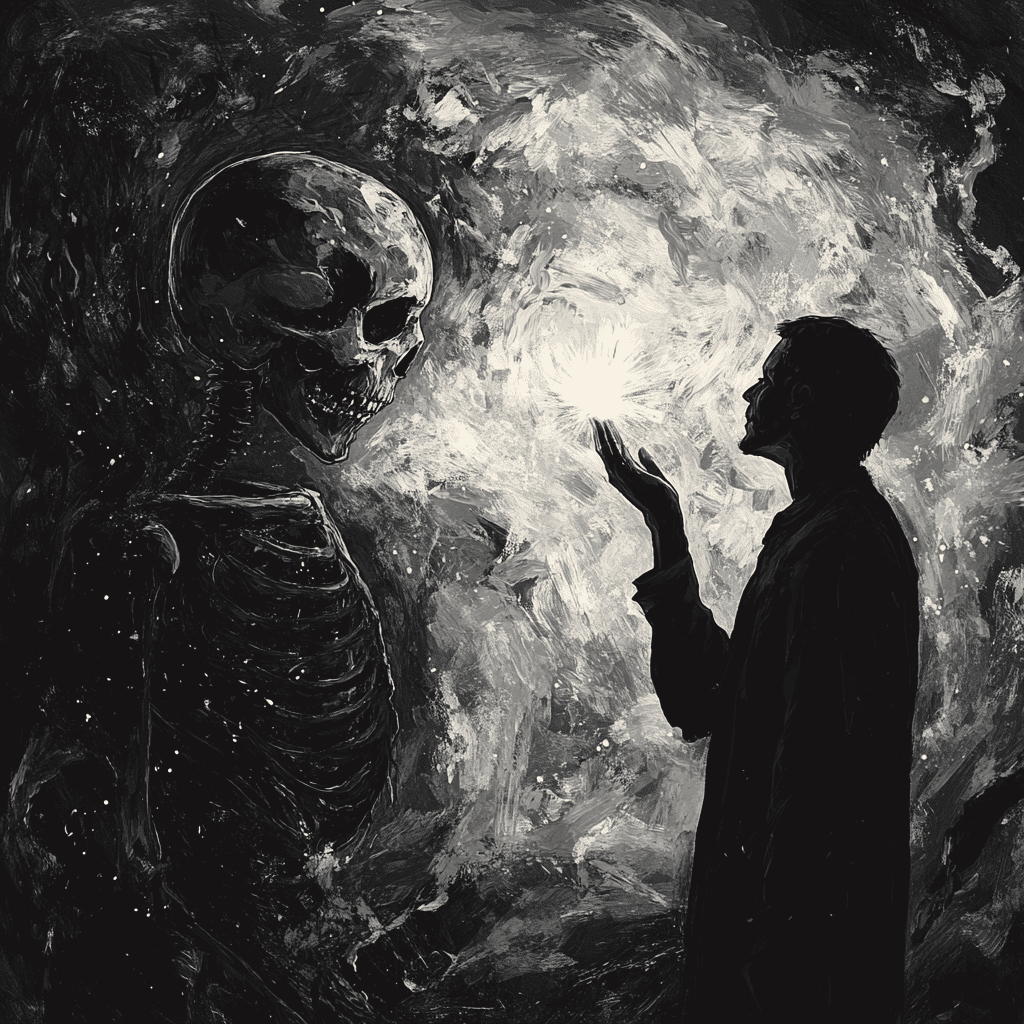
It hit me like grief. Like truth I didn’t want to hear.
I sat there, crying. Quietly. Mourning the chase I’d been on for years. The search for something I once touched, and couldn’t let go of. Ayahuasca told me what I somehow already knew: I will never feel that again—not until judgment day, or if I’m “lucky,” another near-death experience. And even then… that’s a dangerous wish.
But here’s the thing.
That was the night I finally let go of trying to return.
That quiet disappointment, that strange stillness—it freed me. Since that night, I haven’t seeked for mushrooms. I haven’t touched LSD. I’ve stopped reaching for the edges of consciousness trying to get back to that place that I call home. I’ve had a drink here and there, a smoke, but nothing that would send me chasing again. Because in the end, time is still and time is accelerating to my death. we will all die and the time will come. Here’s something I wrote in my diary:
“Because in the end, time is both still and rushing—quiet as breath, yet relentless in its pace. I was shown death not as a threat, but as a certainty. I’ve seen what waits beyond, and it is not like here. The afterlife is eternity—an overwhelming bliss beyond anything the human heart can hold. My death will come—not now, but always. It waits, unhurried, like a shadow stretching toward me. A silent tide pulling me home. I understand now: time was never mine to hold, only to feel. It whispers: live while you still can.
But this life… this fragile, extremely flawed, sacred life—it is something else entirely. It is duality. Pain and beauty, horror and grace, held in the same trembling hands. Sometimes I wonder if my soul chose this—chose to enter the human experience, to know separation, longing, impermanence. To step into the shadow of death just to understand what it means to truly live. After glimpsing the eternal, this life feels even more precious, not the other way around. And that’s the paradox: death showed me how to be alive. My time will come. It always will & I’ll be waiting. But for now—I’m here. And that means something.”
Ayahuasca didn’t give me what I wanted. She gave me something better:
Closure.
Day 2 – Surrender & Spirit (Ayahusca Cermony #2)
The next day, I was completely exhausted. My body felt hollowed out, like all the old weight had been pulled up and out—but in its place, only stillness. Once again, I laid in the Andes sun, letting the warmth ease the ache of the cold Sacred Valley night before.
We had another beautifully bland breakfast and lunch—this time, my taste buds welcomed it. Something had shifted. After such an intense night, I could actually taste the nourishment beneath the simplicity. It no longer felt like deprivation. It felt like gratitude.
Later in the day, I helped one of the staff carry buckets of water from the river to refill the shower tank. There was something grounding about it—cold river water in my hands, earth under my feet, breath rising slowly.
Then came something unexpected and tender: a session of inner child work with Janneke. We spoke about my NDE at 19, the cause of death was strangulation. We discussed how both my mother and grandmother had also been strangled at the age of 19 as well. It was like some invisible thread of generational trauma had followed us, braided through blood and time. That day, I began the work of untangling it—softly, quietly.
A woman from Cusco arrived that afternoon. She would be sharing my room and joining us for the second ceremony. There was a small voice in me—my ego maybe—that thought, “Maybe this time, I’ll experience death again.”
And oh, how quickly I was put in my place.
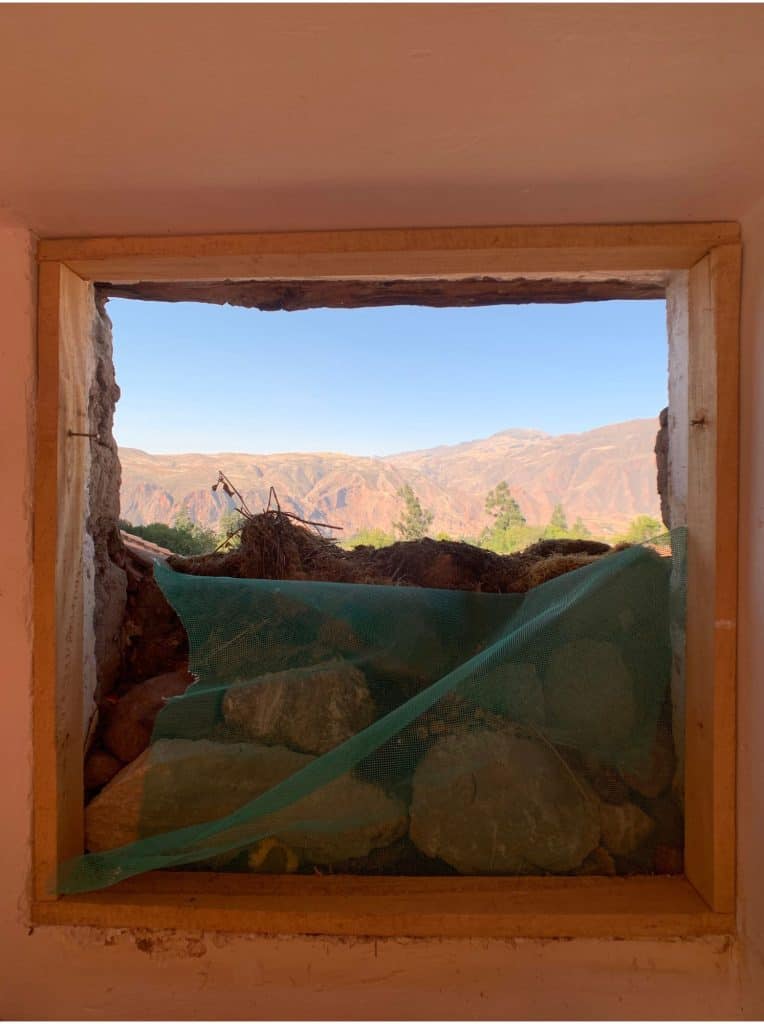
That second ceremony was a teacher in a completely different way.
I had always struggled with self-image, I still do but in a much different way now, more graceful, appreciative and understanding. This ceremony showed me the good, the bad and the ugly. Inside and Out.
It began gently, but soon I was met with an unexpected rhythm: every time I began to sink into a vision, someone beside me would cry—and I’d be pulled out, fully sober again, just listening. At first, I didn’t understand. But then I realized… the medicine was teaching me how to hold space. How to listen. How to sit with the pain of others without trying to fix it. I cried with them—not even knowing why—but with every tear, I imagined wrapping them in the biggest spiritual hug I could give.
And then—snap—I’d be pulled right back into the vision. This time, I saw beauty: glowing flowers, light, and loving characters that felt like parts of myself reborn. It was like being an embryo in a womb of wonder.
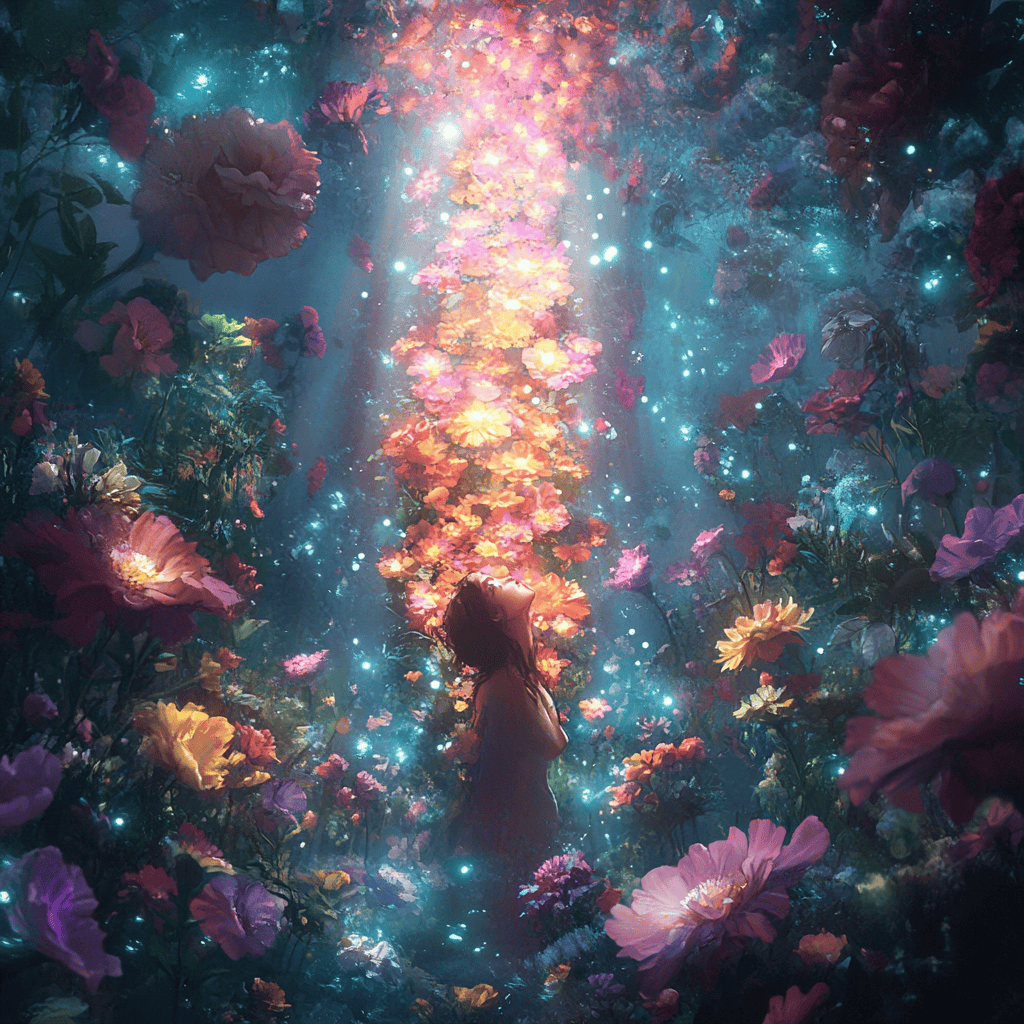
Then a whimper beside me.
Pulled out again.
And again, I listened. Held. Wept. Witnessed.
Each time I re-entered the journey, I saw something new: the rotten parts of myself. My depression, anxiety, lies, and fears. I met them like characters in a dark dream. One of them—what I now know was my anxiety—looked exactly like the creature from The Thing (a movie I’d only just seen in 2025, years after the ceremony). And yes—that’s how gnarly my anxiety truly is.
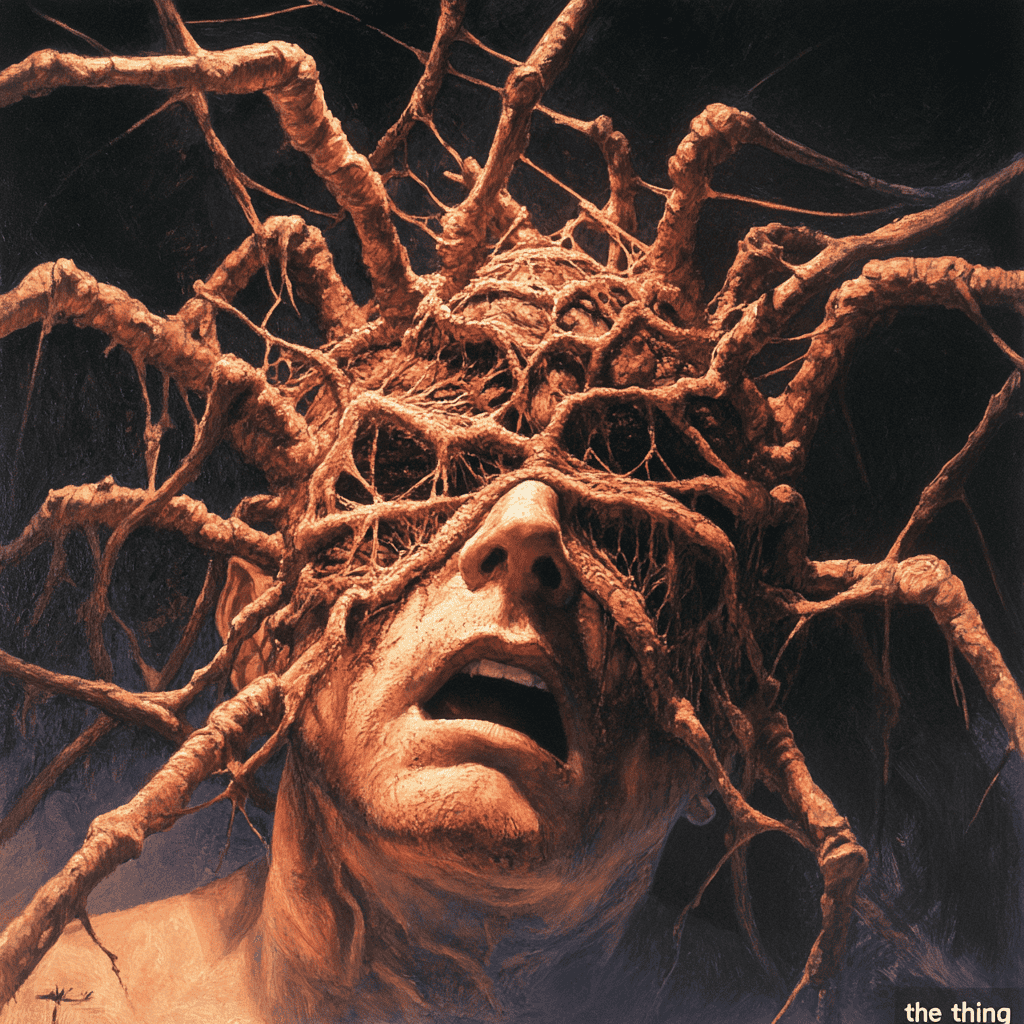
The cycle continued: bliss and horror, beauty and shadow. Laughter and grief. When someone laughed next to me, I laughed too. Our experiences were separate, yet shared. Interwoven. Exhausting.
Eventually, I fell asleep right there on my mat.
Around 3am, Jhon gently woke me up, asking if I felt the ceremony was complete, and if I was ready to head back to my room—because even the maestro, Kamaski, was starting to nod off. I got up slowly, put on my sweater, and stepped outside into the freezing night.
And that’s when the purge hit.
It was intense. I could still feel the medicine moving strongly through me. My mind understood how to put on a sweater, but my vision was flooded with symbols, shapes, strange geometries, and pulsing colors. I thought to myself, “Damn, these guys are ready for bed and I’m just now beginning.”
But they were right there for me, holding space like it was the middle of the ceremony. That moment meant more to me than I can express.
I think I was sick for the next two hours—honestly, it’s a blur. I hardly remember it. Just flashes.
At 5am, I finally made it to bed, collapsed into sleep, and didn’t wake until late the next day. I needed all of it. Every hour to recover from the intensity, the unraveling, and the strange, holy beauty of it all.
Day 3 – The Deepest Kind of Rest
It was a day of rest. And rest, I did.
I’m the kind of person who’s always in motion. Working. Creating. Hustling side gigs. Filling every pocket of free time with something productive or stimulating. Even my “days off” were really just alternate forms of being busy. But on this day, in the Sacred Valley, under the vast watch of the Andes, I truly rested.
And it may have been one of the best rest days of my life.
I was no longer bound by the ayahuasca dieta, so I finally got to enjoy a little salt and the precious, massive Peruvian avocado I had been dreaming about. And oh my god… it was orgasmic. Silky, rich, and tasting like something sacred. After so many days of restriction, that one avocado felt like a gift from Pachamama herself.
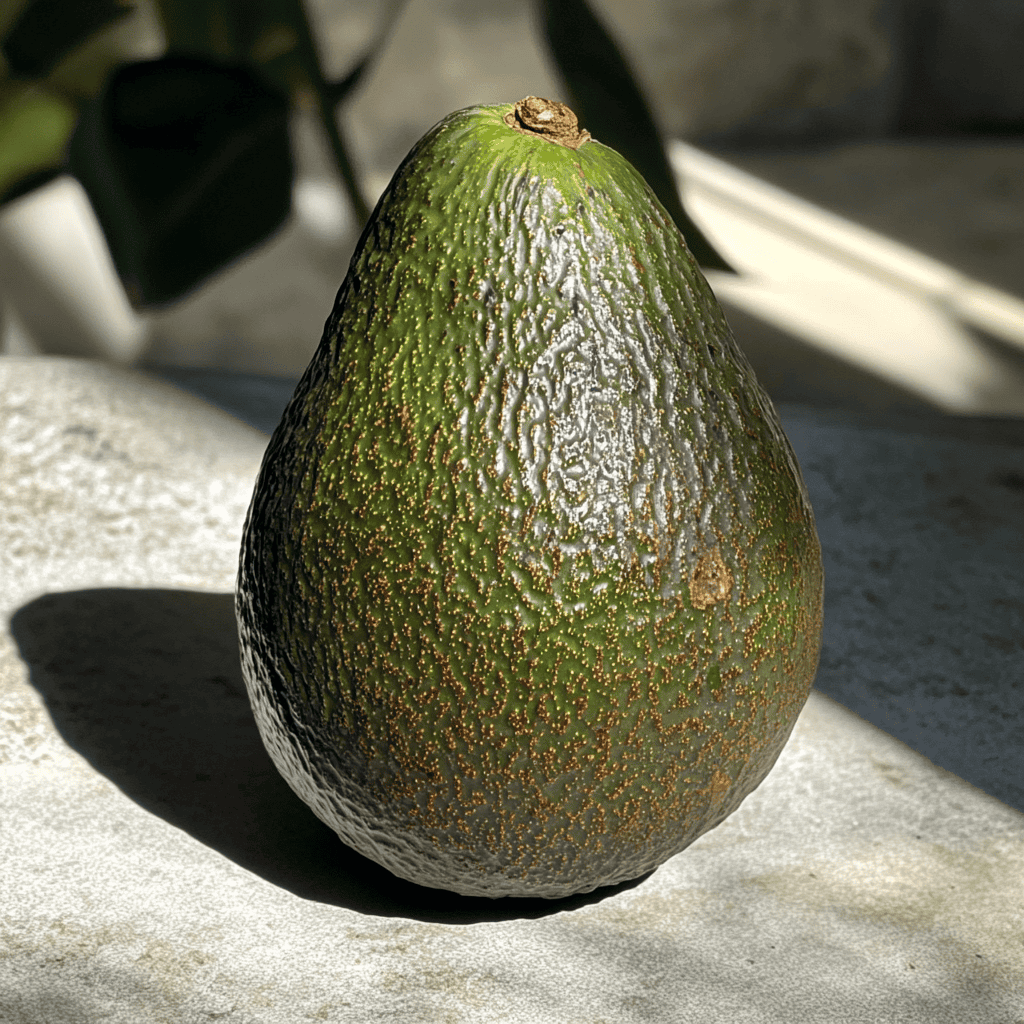
In the middle of the day, a young man arrived—a German-Peruvian boy, just 18 years old. He was beginning his own ayahuasca retreat. I wasn’t participating in that night’s ceremony, but I felt everything. Every demon, angel, and whisper of Pachamama breathing through him.
That evening, as I lay in the dim light of my room, the sacred energy downstairs vibrating through the wooden floorboards, I picked up my journal and wrote:
“Maestro is drumming and chanting downstairs as Johannes, a German/Peruvian boy, who arrived earlier today is partaking his first ayahuasca ceremony. I can hear the river that is fed by the glacier and the sound of the candlelight crackling next to me. The wind is howling as the moon seeps its rays toward the Andes Mountains and I just heard Johannes beginning to purge as he kindly weeps. His emotions are fluctuating from a hysterical laugh to yawning. I know he can taste his inner demons hovering his body, uncanningly vortexing out of his mouth. He is now gently whispering ‘Gracias, Gracias, Gracias’ to Pachamama.“
Day 4 – The Path of the Mountain (Wachuma Ceremony)
Today was the final ceremony of my time in Urubamba—a Wachuma (mescaline) ceremony, dervided from the San Pedro cactus plant. We were guided by the same maestro who had walked with us through the ayahuasca nights. Where ayahuasca carried a deeply feminine energy—emotional, watery, spiraling inward—mescaline felt like its masculine counterpart: grounded, solar, outward-facing. A ceremony not of the night, but of the day.
It was a medicine of movement, not stillness. Of walking, not waiting. The invitation was to hike—up into the hills, along the river, into the bones of the Andes themselves. Maestro Kamaski led the way. We didn’t speak the same language, but it didn’t matter. His gestures, his gaze, his rhythm—they said more than words ever could. Signaling moments to move, to rest, to snake along the winding path, to simply breathe.
The mescaline came on slowly—not explosive, but expansive, like the sky opening gently inside your chest. There was no demand, no urgency. Just presence. The plants, the rocks, the river—all began to speak in soft pulses of energy. Nothing was loud. Everything was honest.
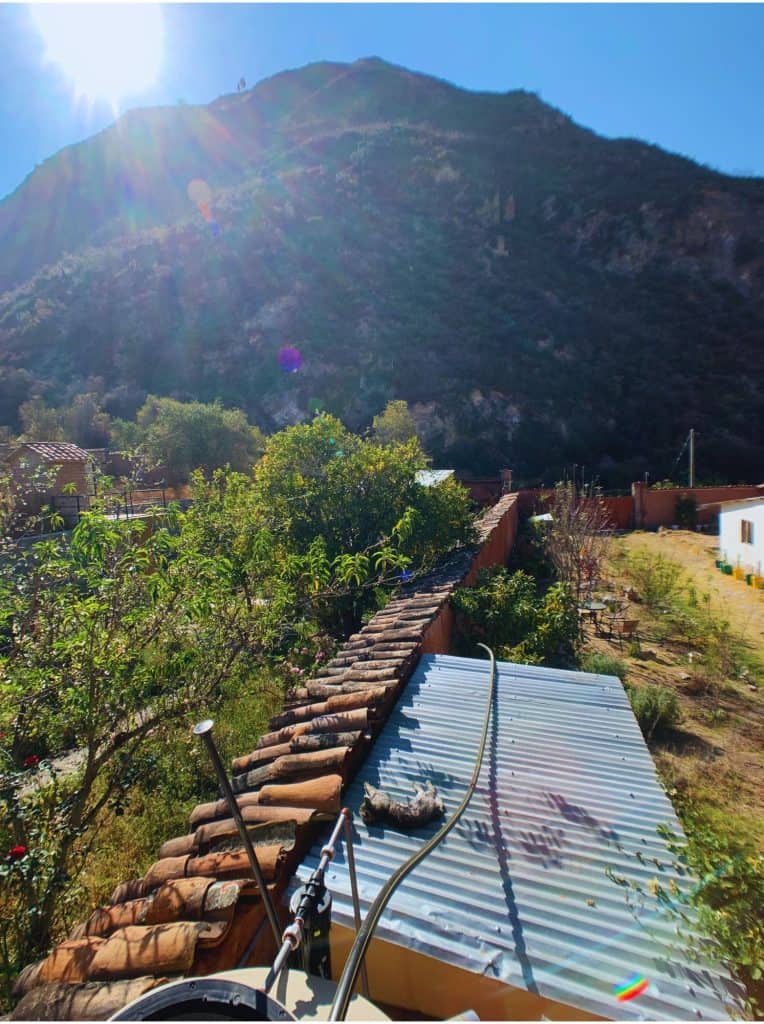
And then there was a moment that still lives in me.
At one point along the trail, Maestro took off his shirt, stepped barefoot onto the stones, and waded into the icy river—glacier-fed, pure and freezing. He submerged himself like it was the most natural thing in the world. Like he and the river knew each other. Like they had known each other forever. There was no hesitation. No drama. Just presence.
But what struck me most wasn’t the cold or the ritual. It was his smile.
In that moment, I saw in him a kind of child-like spirit—not childish, but innocent and wide open. A joy that hadn’t been hardened by age. A lightness that had somehow survived the world. This 50-year-old man with years of medicine behind him, wisdom in his bones, and still… the soul of a child swimming in a mountain river, laughing like it had whispered a secret just to him.
That’s the thing about Wachuma—it doesn’t take you away from the world. It pulls you into it. Deeper. Closer. More awake. It doesn’t ask you to leave your body, it asks you to finally arrive in it. Fully.
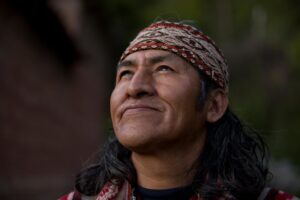
ineThe Beginning Beneath the Ending
It was my last night in Urubamba, and something sacred was coming to a close.
But endings have a strange way of disguising beginnings.
Though the ceremonies had ended, and I was preparing to leave for Pisac, a deeper story was just starting to unfold. This medicine retreat wasn’t the culmination of my South American journey—it was the ignition. A quiet flame lighting the path of something much greater. I just couldn’t see it yet.
What followed was a long, winding journey through the continent—through solitude, surrender, and the slow art of letting go. I wandered without needing direction, magnetizing people and moments that felt touched by something invisible. I wasn’t seeking anything, but somehow, everything started finding me.
And perhaps it was the work I did here, in the Sacred Valley—with the plants, with my ancestors, with my shadows and light—that left me glowing in ways I didn’t fully understand.
Three months later, that glow would guide me to meet the man who would become my husband.
I didn’t know it then.
But maybe the medicine did.
This journey wasn’t about seeking answers. It was about making space for the mystery to enter. And it did—on mountain trails, in laughter and tears, in strangers who felt like old friends, and in love that bloomed quietly when I wasn’t looking.
Some say plant medicine shows you what you’re ready for. I think it also shows you what you’re finally ready to release. And in the sacred act of release, life has a way of placing in your hands the very thing your soul was always calling for.
Even now, when I close my eyes, I can feel the frequency of the Andes crips air and warm sun.
And I remember:
That current was never saying goodbye.
It was saying: Begin.
Conclusion on Ayahuasca in Peru
Ayahuasca is not here to solve your problems.
It’s not a magic wand.
Like therapy, it brings awareness, not escape.
And awareness, as many of us know, is just the beginning.
There’s a trap some fall into—chasing ceremony after ceremony, light after light, death after rebirth, again and again, until it becomes another form of spiritual addiction. A prison made of revelations with no grounding. Insight without integration.
The plants can open the door, yes. But it’s up to you to walk the path.

That’s why spaces like Wilkamayu matter—not because they promise to heal you, but because they honor the responsibility of your healing. They give you room to breathe, to face yourself, to walk your own path with support—but never with dependency.
What I loved most about Wilkamayu was its intimacy. Our group was small—just three of us—and that made all the difference. No crowds. No distractions. Just space. Real space. To unravel, to witness, to soften, and to remember.
The ayahuasca ceremonies here in Peru were tender and strong, feminine and fierce. The mescaline hike—led in silent language by Maestro Kamaski—was an awakening of the senses, a reconnection to the body and the land. Even the food, stripped of seasoning and distraction, taught me about presence and gratitude.
If you’re looking for something curated and comfortable, Wilkamayu may not be for you.
But if you’re looking for something real—something sacred—something alive…
this is the place.
Not because it gives you answers,
but because it reminds you that you already carry them.
It’s where I stopped searching.
It’s where I started listening.
And it’s where everything began.


